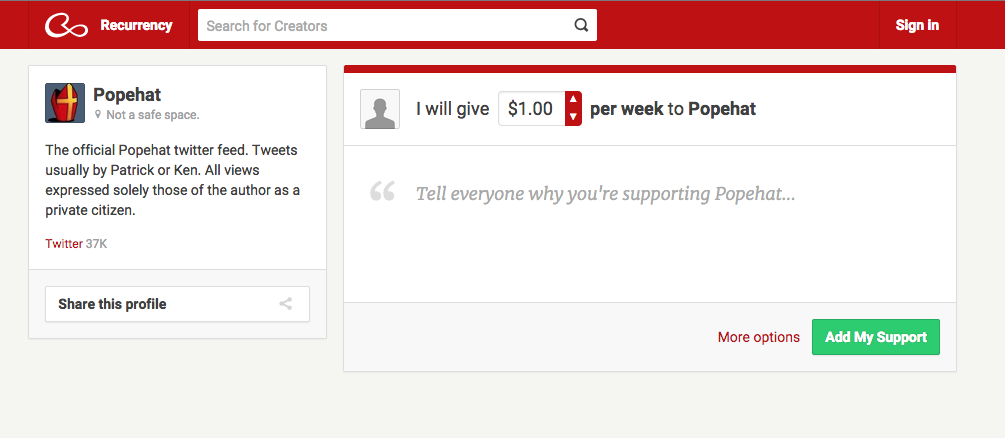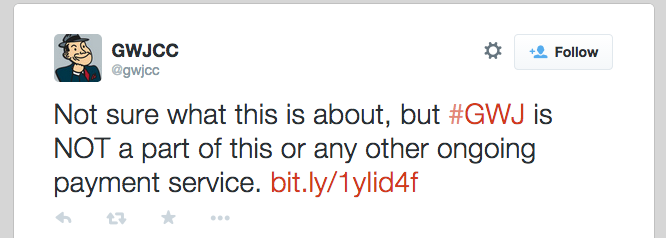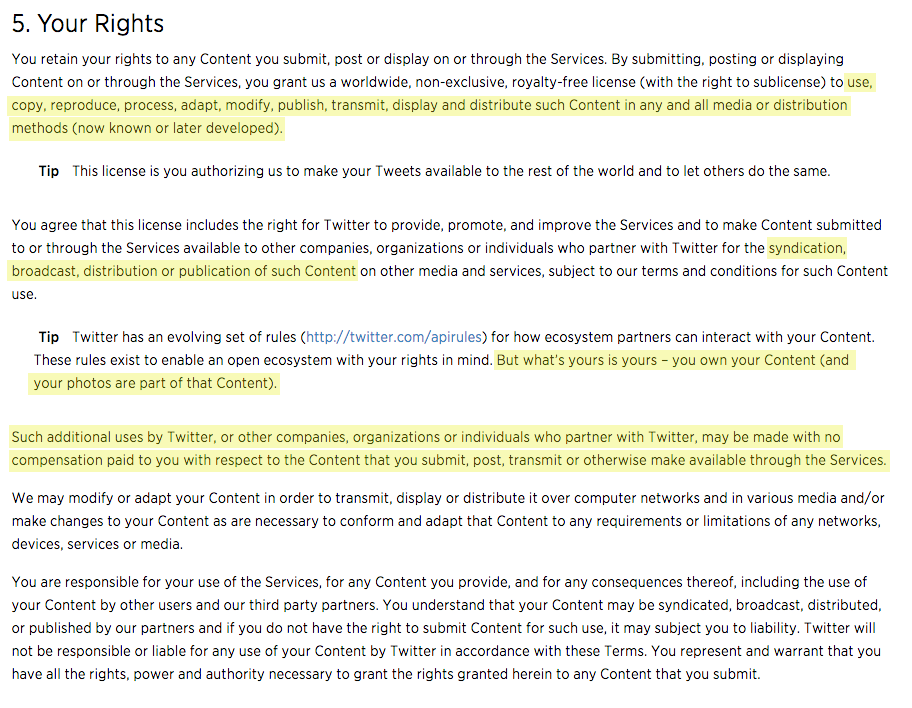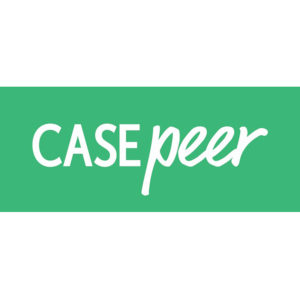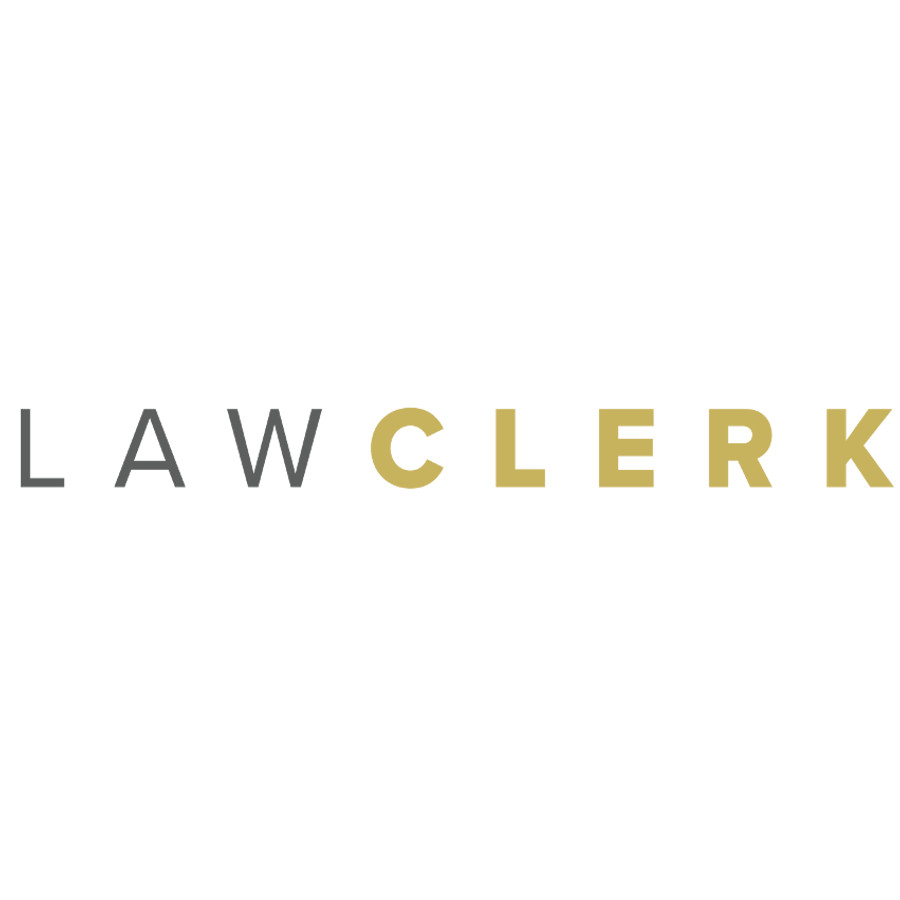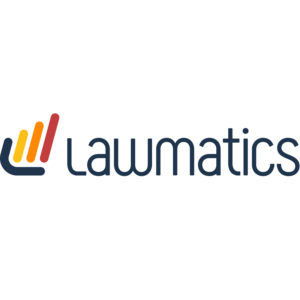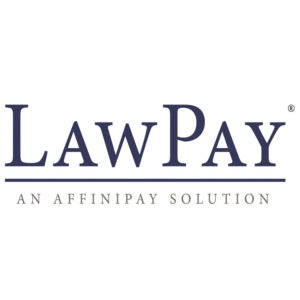(Note: Multiple updates at bottom of post.) A couple months ago I discovered that a web service was scraping the content from a number of legal blogs. I didn’t appreciate having my friends’ content, nor mine, taken and used without permission. As such, I put up a series of posts detailing why, if you steal from lawyers, you’re going to have a bad time.
I didn’t relish having to publically smash someone’s project, but I also didn’t relish blatant violation of my copyright. Nor misappropriation of my likeness to promote their product and make money off of it without my permission. But, “better to ask forgiveness than seek permission,” is the trend on the internet and the startup world. And I get it. The government has become a bloated mess of regulations and oversight that is increasingly less about protecting consumers, but rather protecting entrenched business interests.
Yet there are regulations and laws that do help protect consumers and the general public, such as those discussed in the post above. Copyright law, the right of privacy, and trademark law help protect people from having their intellectual property and likenesses stolen and used without their permission. The great thing about these laws is that their immediacy.
When anyone writes something, copyright attaches immediately. You don’t have to do anything to copyright your work (but you do need to register before you are legally permitted to bring a lawsuit to enforce it). The same holds true for one’s likeness, i.e. – their appearance, their voice, etc. You don’t have to do anything to protect the your appearance, it’s a given that people can’t go around taking your picture and then use it to make money. The same is true with a trademark. There is no need to register a common law mark that is in commercial use (though again, there are reasons to do so). People can’t just take a company’s logo, trade dress, etc. and use it to commercially without the mark owner’s permission.
All that’s to say, that a person’s likeness or a company’s mark are proactively protected and can not be used without permission.
All of which brings me to the startup, Recurrency.
Cart Before The Horse
I’d like to state upfront that I want to give the Recurrency people the benefit of the doubt, after a couple of conversations with some individuals who know some of the people behind Recurrency. I’d guess that their intent in creating Recurrency was in the right place – help connect donors and donees – but their implementation was handled in completely the wrong way.
Trying to help out doesn’t excuse them from violating people’s rights/laws. I could steal $100 from someone with the intent to give it to charity with no benefit to myself, but that doesn’t mean that I didn’t break the law when I stole the $100. Even if somehow I didn’t know it was against the law to steal, I would not be able to avoid punishment.
Ignorantia juris non excusat – Ignorance of the law excuses no one.
Here is what Recurrency is/was doing:
- Using public APIs to scrape Twitter & Facebook for accounts
- Create identical user accounts on their own Recurrency service (without permission)
- Solicit donations/pledges through their Recurrency service, using the logo/mark/likeness of the original account
- Accept donations/pledges on behalf of these accounts, while taking a 5% fee
- Store these donations…somewhere(?)…while attempting to contact the intended donee
- While donations/pledges are stored, “Recurrency may combine your Balance with the Balances of other Members”
- How to make sure your donations/pledges go to the correct recipient? “Verification of Creators and disbursement of Gifts will be made in Recurrency’s sole discretion”
- Recurrency will hold on to your donations/pledges for six months before attempting to return it to you – minus fees
- All of the above is from Recurrency’s TOS
Now that we have a 20,000 foot view of the situation, let’s get into the weeds. Specifically, let’s look at the right of privacy and trademark law as it pertains to the Recurrency service. We’ll also throw in a look at Twitter’s Terms of Service for fun.
(Oh, and as aside for those wanting a TL;DR – grow up. This is a novel issue and a complicated area of law. If you want something quick and easy to ready, go to Buzzfeed.)
What Is A Right of Privacy?
“The right of privacy may be defined as the unwarranted appropriation or exploitation of one’s personality, the publicizing of one’s private affairs with which the public has no legitimate concern, or the wrongful intrusion into one’s private activities, in such manner as to outrage or cause mental suffering, shame, or humiliation to a person of ordinary sensibilities.” 138 ALR 22, 168 ALR 446, 14 A.L.R.2d 750.
The Restatement of Torts (2nd) states: “One who appropriates to his own use or benefit the name or likeness of another is subject to liability to another for invasion of privacy.”
Simply put, when a person’s name or likeness is used, without their consent, in advertising or commercial purposes, they have a right to recover for an invasion of privacy. Let’s look at some examples.
- Selsman v Universal Photo Books, Inc. (1963) 18 App Div 2d 151, 238 NYS 2d 686, holding that a photograph in a camera manual showing the plaintiff motion–picture actress using a certain camera constituted an invasion of privacy for advertising purposes.
- Where a letter written by plaintiff as an entry in a contest was so altered as to indorse a product sold by defendant, which plaintiff had not mentioned in her letter, the publication of the altered letter (after defendant had obtained plaintiff’s consent to publish the original unaltered letter) was held in Manger v Kree Institute of Electrolysis, Inc. (1956, CA2 NY) 233 F2d 5, to be a violation of the New York statute.
- In Olan Mills, Inc. v Dodd (1962) 234 Ark 495, 353 SW2d 22, plaintiff had her picture taken by representatives of defendant, a professional photographer, for the purpose of presenting a photograph to her daughter. When defendant subsequently, and without plaintiff’s consent, used her picture on postcards mailed for advertising purposes and for enlargements used by door–to–door salesmen, and plaintiff testified as to her humiliation, embarrassment, and mental anguish, plaintiff was held entitled to damages for violation of her right of privacy.
- Copyright Act did not completely preempt claims for violation of Illinois right of publicity statute and common-law misappropriation of name or likeness for commercial purposes, so as to support removal of suit brought by amusement park patrons who alleged their photo appeared on commercial packaging without their consent. 17 U.S.C.A. § 301. Leto v. RCA Corp., 355 F. Supp. 2d 921 (N.D. Ill. 2004).
- Model sufficiently pled that adult nightclub’s use, without her consent, on its website a video showing her dancing, was for purposes of advertising or trade, so as to state cause of action under the Civil Rights law, by alleging that use of her image on flyer was not only unconsented use of her image for trade and advertising purposes. McKinney’s Civil Rights Law §§ 50, 51. Molina v. Phoenix Sound Inc., 747 N.Y.S.2d 227 (App. Div. 1st Dep’t 2002).
With that as some background, let’s look at Recurrency.
Up until I started criticizing the company’s business model to the CEO on Twitter, this is what an unclaimed user account on Recurrency looked like:
That is, despite my never having signed up for Recurrency, my name & likeness appeared on their service, complete with the ability for anyone to give me money. Soliciting donations/pledges to a company or individual, while taking a 5% fee for doing so, is a distinctly commercial endeavour. And just as in all the specific examples above, using an individual’s likeness in pursuit of a commercial endeavor without their permission is a violation of their right to privacy.
Sure, if someone was contacted by Recurrency and offered the ability to receive donations/pledges that people had given to them, they might accept it. But that doesn’t mean that Recurrency gets to solicit donations/pledges on their behalf without permission.
Further, there is no exception to the right to privacy that Recurrency could use to shield to themselves either. My likeness in this usage is not a matter of public concern, nor are they utilizing my likeness in the manner of reporting or criticism. They are solely using my likeness, any users’ likeness, without permission, in a commercial endeavour to make money. It’s difficult to imagine how any court would not find this activity to be in violation of an individual’s right to privacy.
Speaking of courts, I also checked in on two of my favorite judicial Twitter people, Judge Dillard of the Court of Appeals of Georgia and Justice Willett of the Texas Supreme Court.
Sure enough, both of their accounts are on Recurrency, ready to be claimed and start accepting donations. You’ll note the difference in their profiles in the screenshot and mine above. I took the above screenshots after I had engaged with the CEO of Recurrency on Twitter and they apparently decided to remove the automated solicitation of pledges/donations.
Which is incredibly important in the case of any judge or politician. Judge Dillard and Justice Willett are bound by a variety of campaign financing and disclosure rules that affect how and when they can receive campaign donations. There is no way the Recurrency service was setup up to comply with reporting rules regarding political pledges/donations.
Furthermore, judges in the United States are also bound by the Code of Conduct for United States Judges, as well as Codes of Conduct specific to their jurisdiction. As such, judges have to carefully manage which organizations they are members of, what activities they engage in, and closely monitor their financial activities. If Recurrency was still set up to automatically obtain pledges/donations, they would preemptively be making financial decisions for US judges. How quickly can you say contempt of court?
As it stands now, by automatically scraping Judge Dillard’s and Justice Willett’s profiles (and plenty more judges), someone could view the profile and take it as an implicit endorsement of the Recurrency service. While the Recurrency service now indicates the profiles as unclaimed, I’d still say they are on incredibly shaky ground using a judge’s likeness without permission.
Finally, a last point of an individual’s likeness, Recurrency is also not taking into account the right of publicity, which is what protects celebrities’ rights and likenesses. That is, celebreties retain exclusive rights to their likenesses and can select which products/services they endorse for pecuniary gain. The right of publicity’s origins are found in the groundbreaking opinion by Judge Frank in Haelan Laboratories, Inc. v. Topps Chewing Gum, Inc. 202 F.2d 866:
We think that, in addition to and independent of that right of privacy (which in New York derives from statute), a man has a right in the publicity value of his photograph, i.e., the right to grant the exclusive privilege of publishing his picture, and that such a grant may validly be made ‘in gross,’ i.e., without an accompanying transfer of a business or of anything else.
There are numerous celebrity profiles on social media networks – but they elect to be there – they are not forced on the the services. And while the social networks do make money off of advertising surrounding the celebrity profiles, they do so in the context of “media.” That is, any likeness/behaviors exhibited by celebrities on social media services is in the context of “reporting” and not endorsement for commercial gain.
Again, Recurrency is/was actively soliciting pledges/donations, while intending to be given to the donee, are/were done so while engaged in a commercial endeavour (taking a 5% fee). Using a celebrity’s likeness in this context would likely be seen an unapproved, uncompensated endorsement and Recurrency could be found to be violating a celebrity’s right of publicity.
Mark This Buddy
All of the above is concerned exclusively with an individual’s likeness. But what about a company or brand? I became aware of the Recurrency service upon seeing a number of outraged Tweets by Idle Thumb and Campo Santo co-founder Sean Vanaman.
Upon reading the above Tweet is when I clicked through and began exploring what the Recurrency service was about. And sure enough, there was Trademark after common mark being used without permission.
Again and again, Recurrency was using either the common mark or Trademark of companies, without consent. So what is trademark law and what does it do?
“Trademark law is designed to protect the integrity of a mark’s meaning by preventing uses of the mark that confuse consumers or, for famous marks, uses that interfere with consumers’ mental association between mark and good.” What the Right of Publicity Can Learn from Trademark Law, 58 Stan. L. Rev. 1161, 1190. Integrity is important for marks as it is what allows companies to develop sound reputations for their goods and services.
The rationale for such protection is straightforward. The use of brands permits companies to build goodwill in their products, reducing the cost to consumers of finding a product with the quality and characteristics they are looking for and permitting manufacturers to reap a return on investments in product quality. If competitors could confuse consumers into thinking they were buying a brand-name product when they weren’t, they could capture sales by manufacturing cheaper products and deceiving consumers into purchasing them. Consumer expectations would be dashed, and producers would no longer have the incentive to invest in quality products. id.
Recurrency’s use of these marks on the Recurrency service is likely to give cause to consumers that there is an implicit agreement between the company, when no such relationship exists. Doing so dilutes these companies’ marks and could prevent consumers from donating/pledging money to these companies or purchasing their goods or services. Let’s look at a specific example.
The above is a Tweet from the Twitter account for the gaming website/podcast, Gamers With Jobs (“GWJ”). GWJ became aware of the service around the same time as Vanaman.
But instead of learning about it on Twitter, they were contacted directly by Recurrency, as someone had used the Recurrency service in an attempt to donate money to GWJ. As can be seen by the above Tweet, GWJ wanted nothing to do with the service. Outside of being added to a service without their permission, GWJ was likely sensitive to someone donating them money through a service they don’t use as the GWJ website/podcast is funded exclusively through an annual donation drive.
Recurrency, by using the GWJ name & mark, unnecessarily inserted themselves between consumers and GWJ in the context of pledges/donations. The 5% fee that Recurrency takes on every donation/pledge thus prevents GWJ from receiving the full amount they could receive during their annual drive. While GWJ rejected the donation from Recurrency, as Recurrency retains their 5% fee even upon an unsuccessful donation, said 5% fee is an amount that is prevented from being donated to GWJ.
But What About Them Terms?
Of course, an important consideration in all this is the originating Terms of Service (“TOS”) for the social networks from which the profiles were scraped. Let’s focus on Twitter, as that is the service exclusively discussed in this post. The relevant clause from Twitter’s Terms of Service are as follows (highlights are mine):
By using Twitter, all users grant Twitter a license to broadcast their “Content” (any information, text, graphics, photos or other materials uploaded, downloaded or appearing on the Services). But the use of said Content is in the context of distribution & display methods, not explicitly using the Content for commercial gain.
For example, the New York Times (“NYT”) can publish an article on the activities of Kanye West and sell advertising around the article as they are not explicitly using his likeness as an endorsement of their newspaper, nor are they using his likeness to sell a shirt or an album.
If the NYT published an edition that had a large picture of West and the headline “Kanye West Wants You To Buy This Newspaper,” and West had not received an endorsement for use of his likeness, the NYT would have violated West’s right to publicity as it had used his likeness for commercial gain without compensation.
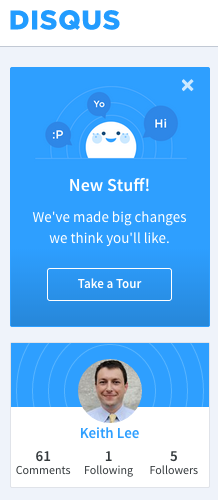 The language in Twitter’s TOS narrowly constrains the usage of user Content, by itself and partners, in the context of “any and all media or distribution methods.” The use of individual’s likenesses or companies’ marks on the Recurrency service is not for media distribution. It is for the active solicitation of commerce, of which Recurrency is an intended beneficiary. As such, it’s likely arguable that Recurrency is in violation of Twitter’s TOS. Again, the emphasis here is on permission.
The language in Twitter’s TOS narrowly constrains the usage of user Content, by itself and partners, in the context of “any and all media or distribution methods.” The use of individual’s likenesses or companies’ marks on the Recurrency service is not for media distribution. It is for the active solicitation of commerce, of which Recurrency is an intended beneficiary. As such, it’s likely arguable that Recurrency is in violation of Twitter’s TOS. Again, the emphasis here is on permission.
A final example. My likeness, that is pulled from Twitter, appears on the Disqus discussion platform. But I actively sought out the Disqus platform and it asked permission to access my account. It was my choice to grant it license to use my likeness on its service. Disqus did not preemptively scrape my account and likeness without my permission.
Never Without My Permission
Closing out, I want to reiterate that I think Recurrency started their service from a place of good intent. The desire to help independent artists and creators develop a revenue stream not dependent on advertising is a good one. It allows consumers and creators to have a direct one-to-one relationship.
I hope they get things squared away and are able to find success with that mission. But that doesn’t mean they get to be ignorant of the law. Nor does it mean that I’ll stand by and allow my likeness or copyright be used without my permission.
Society, life really, is like one huge, complicated board game. And one of the benefits of being a lawyer is we’re the only ones who know the rules. That’s our function in society. That’s why it’s also important to note that all of the above could have been avoided if Recurrency had just taken the time to consult with a good IP lawyer first. I get that lawyers are expensive and people want to avoid the hassle of having them involved when they are starting a business.
But, having a lawyer involved at the beginning of a business is akin to having health insurance. It’s a cost you’d rather not pay, and something that you likely won’t need.
But when you need it, you’re really really glad you paid for it.
Update: 4/6/2015, 2030 CST, the Recurrency website seems to have been taken offline.
Update 2: 4/7/2015, 0600 CST, it’s back, with modified Terms, and a revamped unclaimed profile section.
Final Update: Recurrency shuttered their doors in February 2016.
Resources/Citations:
- Invasion of privacy by use of plaintiff’s name or likeness in advertising, American Law Reports ALR 3d.
- WHAT THE RIGHT OF PUBLICITY CAN LEARN FROM TRADEMARK LAW, Stacey L. Dogan , Mark A. Lemley, 58 Stan. L. Rev. 1161, (2006).
- Rights and Liabilities in Media Content (2d ed.).







